
Smartware Cookware is made from silicone, a rubberlike material. Silicone has properties that imitate organic, carbon-based compounds, such as vegetable oil, petroleum or animal fats. This results in a flexible product that's useful for baking. Though this brand of silicone bakeware cooks food like other materials, its use and care requirements are slightly different.
Preparing New Cookware
Before you use Smartware cookware, or another silicone cookware product, wash the pieces in soapy water or in the dishwasher and rinse thoroughly with clean water. While other silicone cookware must be oiled with melted butter or vegetable oil before use, you never need to do this with Smartware silicone cookware.
Cleaning Silicone Products
To clean, rinse Smartware cookware with warm, soapy water, using a soft sponge to wipe, and then rinse thoroughly. Smartware and other silicone cookware is dishwasher safe as well, so it won’t flake or warp if you toss it in with your regular dishes. But never use abrasive cleaners or scouring pads on Smartware cookware or other silicone products. These scratch the surface and can damage the silicone.
In the Oven
Never use silicone cookware in oven temperatures over 500 degrees Fahrenheit, and always use oven mitts when transferring the cookware in and out of the oven. Never place an empty piece of silicone cookware in the oven. For example, if making muffins and you don’t have enough batter to fill a mold, pour flour into the empty molds to avoid damaging the silicone. Silicone cookware should never be used on direct heat sources such as grills, hot plates and stove tops. If you’re using a convection oven, place your cookware at mid-height. In a traditional oven, Smartware and other silicone cookware should be placed on the lowest racks. You can place large pieces directly on your oven’s racks, but smaller pieces require more stability, so place these on metal cookie sheets. Keep in mind that cooking times may vary depending on the manufacturer and the size of the cookware, although typically foods cooked in silicone molds take the same amount of time as those cooked in metal cookware.
Microwaving and Freezing
Because Smartware cookware is made from silicone, it's safe to use it in the microwave. Always place the cookware directly in the center of the microwave oven and use oven mitts when removing to avoid burns. Silicone cookware can also go into the freezer without warping or cracking, and it can be transferred from the freezer and heated without damaging the mold as well.
Removing Food After Cooking
Smartware cookware should be cool to the touch after two minutes out of the oven or microwave, but the food you’re cooking will not cool as rapidly, so allow enough time for the food to cool completely before removing it from the mold. If you’re removing baked goods such as cakes or muffins, turn the cookware mold over and press on the bottom while peeling back or twisting the silicone mold. Do not use metal tools to remove food from or to cut food in Smartware cookware. This may damage the silicone. Use tools without sharp surfaces instead, such as wooden, plastic or Teflon-coated utensils.
Related Articles

How to Cook in Ceramic Bakeware

Anodized Vs. Teflon in Cookware

How Long Do You Bake Brownie Cupcakes ...

The Safety of Refrigerators and ...
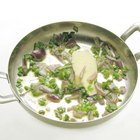
Are Nickel Lined Pans Safe?

What Is Better for Cookware: Glass, ...
How to Lower Cooking Times & ...

How to Clean Burnt Spills on Silicone ...

Cooking With Glass Vs. Ceramic
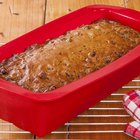
Healthy Non-Stick Cookware
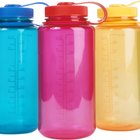
Heating Foods in Plastic & BPA
Can I Bake a Homemade Pizza on a Pan ...
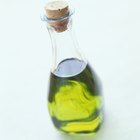
How to Season Granite Grill Cooking ...
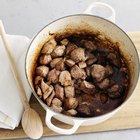
Can Ceramic Cookware Be Used on ...

DIY: Anti-Glare Coating
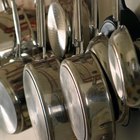
How to Cook With Stainless-Steel Frying ...
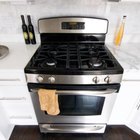
Bagel Bites Heating Instructions

Cooking With Stoneware
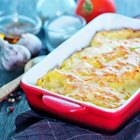
What Are the Benefits of Stoneware ...

How to Clean an Oven Liner
References
Writer Bio
Renee Miller began writing professionally in 2008, contributing to websites and the "Community Press" newspaper. She is co-founder of On Fiction Writing, a website for writers. Miller holds a diploma in social services from Clarke College in Belleville, Ontario.
Photo Credits
Jupiterimages/Polka Dot/Getty Images